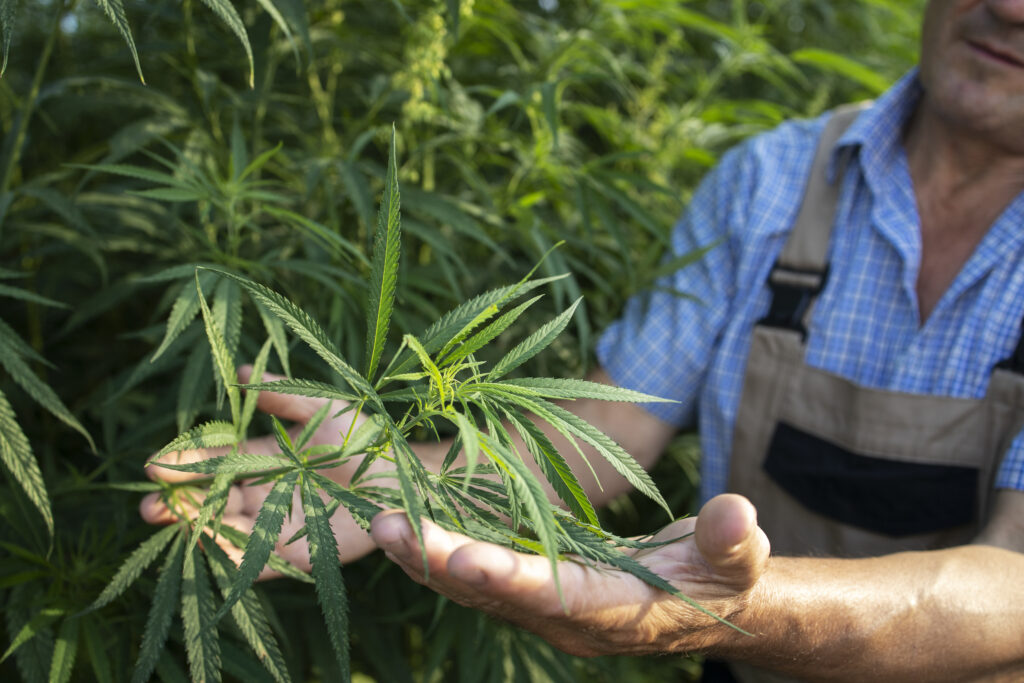Exploring Cannabis: From History to Modern Applications
Introduction
Cannabis, often referred to as marijuana or weed, has come a long way from its historical origins as a revered plant to its current status as a global sensation. In recent years, it has witnessed a remarkable resurgence in popularity, thanks to evolving perceptions and an expanding legal landscape. Whether you’re a seasoned cannabis connoisseur or a budding entrepreneur looking to explore this booming industry, understanding the fundamentals of cannabis is essential. In this comprehensive guide, we’ll delve into the world of cannabis, exploring its origins, the diverse array of strains available, and what makes this plant so unique.
What is Cannabis?
At its core, cannabis is a genus of flowering plants in the family Cannabaceae. The primary species, Cannabis sativa, Cannabis indica, and Cannabis ruderalis, are the main focus of our exploration. These plants contain a multitude of compounds, the most well-known of which are cannabinoids. Cannabinoids are chemical compounds that interact with the endocannabinoid system in humans and animals, producing a wide range of effects.
Cannabis plants produce more than 100 different cannabinoids, with the two most prominent ones being tetrahydrocannabinol (THC) and cannabidiol (CBD). THC is responsible for the psychoactive effects often associated with cannabis use, while CBD offers various therapeutic benefits without inducing a high. These compounds, along with terpenes, flavonoids, and other phytochemicals, contribute to the plant’s distinct aroma, flavor, and effects.
A Brief History of Cannabis Use
Cannabis has a rich history that dates back thousands of years, making it one of the oldest cultivated plants on Earth. Its use can be traced to ancient civilizations in Asia, where it was primarily utilized for medicinal, spiritual, and industrial purposes. The first documented use of cannabis dates back to ancient China, where it was used for its therapeutic properties as early as 2737 BCE by Emperor Shen Nung.
Throughout history, cannabis has spread worldwide, gaining prominence in various cultures. It played a significant role in religious rituals in ancient India, was used as a source of fiber for textiles in Europe, and even found its way into early American medicine cabinets in the form of tinctures and extracts. However, cannabis faced increasing scrutiny and regulation in the 20th century, ultimately leading to its prohibition in many countries. The United States added new state markets, with New York, in particular, expected to be second only to California in terms of market size. This growth is a testament to the changing perceptions and legal frameworks surrounding cannabis. Notably, California, the single largest cannabis market in the world, has surpassed even the entire country of Canada in terms of market size, study by Statista.
In recent decades, a global shift in perception and a growing body of research have paved the way for the legalization and decriminalization of cannabis in numerous regions. This transformation has not only rekindled interest in its medicinal and recreational use but has also given rise to a thriving cannabis industry.
Evolution of Cannabis Use in the Modern World

Cannabis, often referred to as “Nature’s Green Gift,” has undergone a remarkable transformation in its perception, utilization, and societal role throughout the modern era. The story of cannabis in the modern world is one of shifting attitudes, changing legislation, scientific discovery, and an expanding array of applications that extend far beyond its historical use.
- Shifting Legal Landscape:
One of the most notable aspects of the modern evolution of cannabis is the changing legal landscape. In the latter half of the 20th century and into the 21st century, numerous countries and states have reevaluated their stance on cannabis, leading to a seismic shift in its legal status. Decades of prohibition and criminalization have given way to decriminalization, medical legalization, and, in some cases, recreational legalization. This shift has redefined how society views and interacts with this plant.
- The Rise of Medical Cannabis:
A pivotal moment in the modern history of cannabis was the recognition of its medical potential. Scientific exploration into the plant’s chemical composition and its interaction with the human body has revealed a treasure trove of therapeutic properties. This newfound understanding has paved the way for the emergence of medical cannabis programs in various regions worldwide. Conditions once considered untreatable are now being addressed with cannabis-based medicines, giving patients new hope and options for managing their health.
- Scientific Advancements and Research:
The evolution of cannabis use is deeply intertwined with scientific advancements. Researchers have harnessed cutting-edge technology to explore the complexities of the cannabis plant and its compounds. This research has led to a deeper understanding of cannabinoids, terpenes, and their interactions with the endocannabinoid system in the human body. This knowledge has not only fueled the development of precise medical treatments but has also spurred innovation in the cultivation and extraction techniques used in the cannabis industry.
- Mainstream Acceptance and Reducing Stigma:
As cannabis’s medical benefits become increasingly clear and well-documented, it has gained mainstream acceptance. The once-pervasive stigma surrounding cannabis is slowly dissipating, and the plant is increasingly viewed as a legitimate and valuable treatment option for various health conditions. This shift in perception has encouraged patients to explore cannabis as a viable alternative or complement to conventional treatments.
- Economic and Industry Growth:
Beyond its medical applications, the modern cannabis industry has emerged as a significant economic force. It encompasses various sectors, including cultivation, manufacturing, retail, and research, creating jobs and contributing to economic growth in regions where cannabis has been legalized. The industry’s expansion has not only generated revenue but has also fostered innovation and entrepreneurship.
Varieties and Strains of Cannabis
Cannabis, like fine wine, comes in a myriad of varieties and strains, each with its unique characteristics. Understanding these differences is crucial for both consumers and industry professionals.
1. Cannabis Species:
-
- Cannabis Sativa: Known for its uplifting and cerebral effects, Sativa strains are often associated with increased energy, creativity, and sociability. They typically have higher THC content and taller, lankier plants.
- Cannabis Indica: Indica strains are prized for their relaxing and sedating effects, making them ideal for relaxation and sleep. They tend to have higher CBD content and shorter, bushier plants.
- Cannabis Ruderalis: While less common, ruderalis is known for its auto-flowering characteristic, which means it doesn’t rely on light cycles to transition from the vegetative to the flowering stage. It’s often used in hybrid breeding to create strains with unique attributes.
2. Hybrid Strains: These strains are bred by combining sativa and Indica genetics to create a broad spectrum of effects and flavors. Hybrid strains can be balanced (50% Sativa, 50% Indica) or lean more heavily toward one species, depending on the desired outcome.
3. Cannabinoid Profiles: Understanding the cannabinoid composition of a strain is crucial. Some strains are THC-dominant, offering a more euphoric experience, while others are CBD-dominant, providing potential therapeutic benefits without the psychoactive high.
4 Terpenes: Terpenes are aromatic compounds that contribute to the distinct flavor and aroma of each strain. They also play a role in the overall effects of cannabis. For example, myrcene may impart a relaxing quality, while limonene can uplift and invigorate.
5. Flavor and Aroma: Cannabis strains can have various flavors and aromas, from earthy and piney to fruity and floral. Exploring different strains allows you to discover the sensory nuances that appeal to your palate.
Medicinal Applications of Cannabis

Cannabis, often celebrated for its recreational use and cultural significance, holds a profound and multifaceted role in medicine. In recent years, the scientific community has increasingly turned its attention to the therapeutic potential of this remarkable plant, unlocking a treasure trove of possibilities that extend well beyond its recreational allure. Within the framework of modern medicine, cannabis has emerged as a versatile tool with the potential to alleviate suffering, improve the quality of life, and offer respite to those navigating the complexities of various health conditions. Cannabis has a wide range of potential medicinal applications due to its interaction with the endocannabinoid system in the human body. Here, we’ll discuss some of the prominent medicinal uses:
Pain Management:
- Cannabis, particularly strains rich in THC, can provide relief from chronic pain conditions like neuropathic pain, arthritis, and fibromyalgia.
- It is often used as an alternative to opioids, which can have severe side effects and the risk of addiction.
Anxiety and Depression:
- CBD, a non-psychoactive cannabinoid, has shown promise in alleviating symptoms of social anxiety and depression.
- It may work by modulating serotonin receptors and promoting a sense of calm and well-being.
Epilepsy and Seizures:
- Medical cannabis, especially CBD-rich strains, has been used to treat epilepsy, particularly in cases where traditional treatments are ineffective.
- CBD’s anticonvulsant properties have significantly reduced the frequency and severity of seizures.
Nausea and Vomiting:
- Cannabis, particularly THC, is known to reduce nausea and vomiting in cancer patients undergoing chemotherapy.
- It can help improve appetite and overall quality of life for individuals undergoing cancer treatment.
Conclusion
Our journey through the multifaceted world of cannabis has revealed a plant of remarkable significance. From its ancient origins in human rituals and medicinal practices to its modern resurgence as a medical marvel, cannabis stands as a living testament to our enduring relationship with the natural world.
At its core, cannabis is a botanical treasure trove. Its complex chemical composition, comprising cannabinoids, terpenes, and flavonoids, interacts synergistically with the human endocannabinoid system, offering a diverse array of potential therapeutic applications. We’ve witnessed its potential in pain management, epilepsy treatment, anxiety relief, and alleviating nausea, bringing hope to those for whom conventional remedies have fallen short. If you’re eager to explore more about the incredible world of cannabis and stay updated on its evolving role in healthcare, visit our blog page. There, you’ll find in-depth articles and the latest insights, from its potential in treating cancer and neurodegenerative diseases to its broader impact on our society. Join us in rediscovering our profound connection with nature and reshaping how we perceive and utilize this extraordinary gift from the Earth.




How is Hemp Oil Different from CBD Oil? – My Weed Business
November 6, 2023[…] on the other hand, is primarily extracted from the flowers, leaves, and stalks of the hemp plant. CBD, or cannabidiol, is a non-psychoactive compound that has gained recognition for its potential therapeutic […]